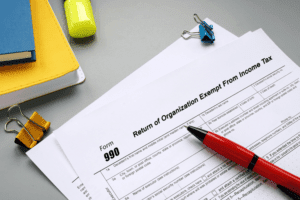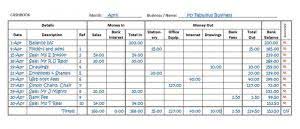
According to the Wall Street Journal, Molson Coors Beverage Co., the maker of Coors Light and Miller Lite beer, was saddled with debt after an industry acquisition. Explore our online finance and accounting courses to build your toolkit for making and understanding financial decisions. If you aren’t sure which course is the right fit, download our course flowchart to determine which best aligns with your goals. If you want to dive into creating financial statements, download our free financial statement templates to start practicing.

Ratio #12 Inventory Turnover Ratio
- The EM ratio tells us the number of assets leveraged byeach dollar of equity.
- DE ratiosare the most common leverage ratios used by financial managers.They combine two point-in-time measures from the same balancesheet.
- Investors can benefit from the dividend as well as appreciation of the stock.
- The TIEratio in 2018 is 1.35 which is less than the industry’s lowestquartile.
- Of course, if you want to know if an organization would be able to pay in the three-month time frame, then, the Quick Ratio may be a more appropriate measure of liquidity compared to the Current Ratio.
The ratio measures the operating income of a business against its net sales. It’s an excellent indicator of the company’s operational efficiency. Like the TIE ratio, the DS ratio answers questions about thefirm’s ability to pay its current long-term debt obligations. The operating margin measures how much profit a company generates from net sales after accounting for the cost of goods sold and operating expenses. The debt-to-equity ratio measures a company’s debt liability compared to shareholders’ equity. This ratio is important for investors because debt obligations often have a higher priority if a company goes bankrupt.

Leverage ratios
Typically, the ratio is found by dividing one metric by the other to find the relationship between them. With the gathered information, analysts can calculate the ratio in one or two steps. This data should be readily available for publicly traded companies. However, it can be a bit trickier for external analysts to find this data on private companies. Indicates the amount of time customers are taking to pay their bills.
- The price-earnings ratio is calculated by dividing the Market price by the EPS.
- It indicates the proportion of the company’s assets provided by creditors versus owners.
- This is a key indicator of how well a company’s investment in assets (a new factory for example) is helping it generate sales.
- Here, we measure how leveraged the company is and placed concerning its debt repayment capacity.
- The debt to equity ratio is also defined as the gearing ratio and measures the level of risk of an organization.
B. Profitability Ratio Formulas

The receivable turnover ratio shows how often the receivable turns into cash. The ratio of 1 is ideal; if current assets are twice a Accounts Receivable Outsourcing current liability. However, if the ratio is less than 2, repayment of liability will be difficult and affect the work. The return on assets (ROA) formula ratio indicates how effectively the company uses its assets to make a profit. The higher the return, the better the company in effectively using its assets.

The cash ratio measures a business’s ability to use cash and cash equivalents to pay off short-term liabilities. Below is an Excel template with all of the formulas needed for calculating each of the 5 financial ratios. Plug in your company’s numbers and get a quick and accurate picture of where you stand on liquidity, debt concentration, growth, profitability, and market value. Financial ratios help you make sense of the numbers presented in financial statements, and are powerful tools for determining the overall financial health of your company. Ratios fall under a variety of categories, including profitability, liquidity, solvency, efficiency, and valuation. The income statement shows a company’s financial position and performance over a period by looking at revenue, expenses, and profits earned.
- A contra revenue account that reports the discounts allowed by the seller if the customer pays the amount owed within a specified time period.
- Although we already covered the formula for ROE in this article, the DuPont Model is a different way of looking at the equation.
- The debt ratio measures the proportion of debt a company has to its total assets.
- Let’s delve into the world of market ratios, exploring their significance, calculation methods, and interpretation.
- Examples include cash, investments, accounts receivable, inventory, supplies, land, buildings, equipment, and vehicles.
- Some of the products may not have been sold in more than a year, some may not have been sold in 10 months, some were sold shortly after arriving from the suppliers, etc.

A higher operating profit margin indicates better operational efficiency and profitability. Financial ratios play a crucial role in analyzing and interpreting the financial health and performance of a company. They provide valuable insights into various aspects of a company’s operations, how would you characterize financial ratios profitability, liquidity, and solvency.
#5 – Market Value Ratios
ROA indicates the company’s efficiency in generating profits relative to its asset base. A higher ROA suggests better utilization of assets to generate profits. Liquidity ratios are gross vs net an essential tool for evaluating a company’s financial health and its ability to meet short-term obligations.
Common-size balance sheet resulting from vertical analysis
Efficiency ratios show how effectively a company uses working capital to generate sales. No single ratio or statement is sufficient to analyze the overall financial health of your organization. Instead, a combination of ratio analyses across all statements should be used. While there are many metrics you can use to evaluate financial health, one of the surest means is through financial statement analysis. Here’s a look at the different types of analyses you can conduct to gain a better understanding of your company’s financial health.

